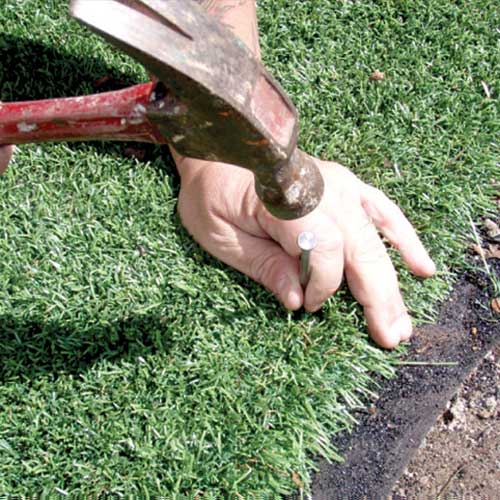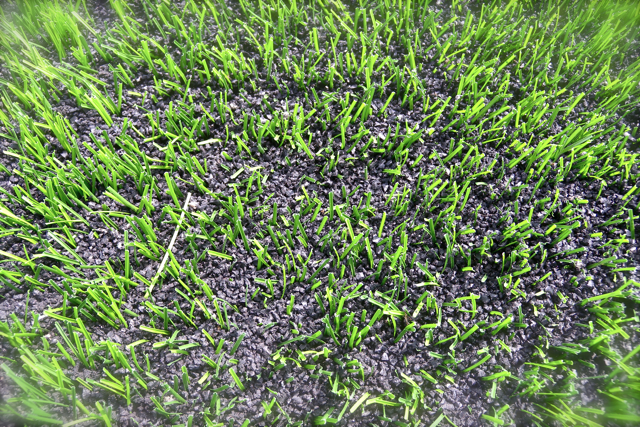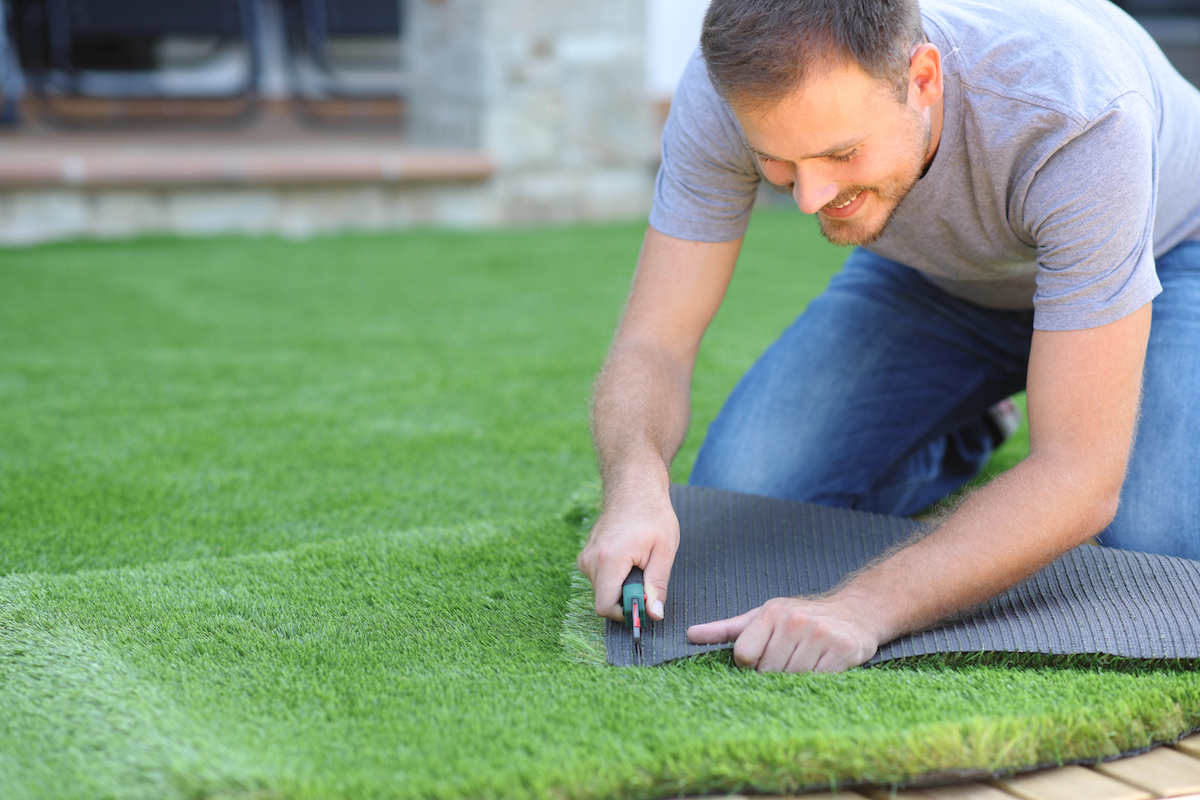Best Phoenix Turf Companies Offering High-Quality Synthetic Grass Options
Best Phoenix Turf Companies Offering High-Quality Synthetic Grass Options
Blog Article
Explore the Environmental Benefits of Opting for Synthetic Grass Solutions
The fostering of synthetic grass options provides a compelling possibility to attend to pressing environmental challenges. By considerably decreasing water use and minimizing the application of hazardous chemicals, these choices not only advertise sustainable landscaping but also shield regional communities. Furthermore, the reduced carbon footprint related to reduced maintenance activities adds to a more lasting strategy to land monitoring. Nonetheless, the implications of these advantages expand beyond mere conservation initiatives, increasing questions concerning their long-term influence on environment preservation and total environmental balance. Checking out these dimensions discloses a complicated interaction worth thinking about.
Water Conservation Benefits
Among the most considerable benefits of fabricated lawn is its capacity to preserve water. Standard lawn yards need considerable watering, particularly in areas susceptible to drought or water limitations. In comparison, synthetic grass does not need watering, dramatically minimizing the overall need for water resources. This function is particularly beneficial in deserts where water deficiency is a pressing concern.
By removing the requirement for routine watering, man-made lawn adds to sustainable landscape methods and helps alleviate the environmental effect of too much water consumption. The conservation of water expands to the reduction of runoff, which can lead to dirt erosion and waterway contamination.
In addition, the installment of synthetic grass permits communities and home owners to designate water resources much more effectively, concentrating on necessary usages such as drinking water and agriculture. The change in the direction of synthetic grass not just advertises liable water use yet also aligns with more comprehensive environmental goals intended at protecting natural resources.
As areas progressively focus on sustainability, the water conservation benefits of man-made turf present a compelling instance for its fostering in commercial and property landscape design jobs.
Lowered Chemical Usage
The change to fabricated lawn considerably decreases the dependence on chemical therapies commonly used in all-natural turf upkeep. Standard grass administration commonly entails the application of herbicides, fertilizers, and pesticides to advertise growth and control insects. These chemicals can pose dangers to human wellness, regional wildlife, and the setting, adding to dirt and water contamination.
In contrast, fabricated grass removes the need for these damaging substances. By reducing the launch of synthetic substances into the ecosystem, fabricated turf advertises much healthier soil and water systems.
Additionally, the lack of chemical overflow linked with synthetic grass installations assists shield local waterways from air pollution, supporting water life and preserving biodiversity. Phoenix turf companies. As communities progressively focus on lasting techniques, going with synthetic grass presents a sensible service that aligns with environmental preservation goals. Via this shift, homeowner can delight in rich environment-friendly rooms without compromising environmental wellness, leading the means for a more sustainable future
Lower Carbon Footprint

In addition, the installation of synthetic grass can lead to significant water preservation. All-natural grass call for significant amounts of water for irrigation, which not just contributes to the carbon impact associated with water extraction and treatment yet also stress regional water sources. In comparison, synthetic lawn needs minimal maintenance, requiring no watering, thereby substantially lowering water use and its linked power costs.
Furthermore, the durability of synthetic grass adds to its lower carbon impact. With a lifespan of up to 15 years or even more, the demand for click here for more info regular substitutes is reduced, leading to less waste and lower energy usage in production and taking care of traditional grass choices. On the whole, synthetic grass offers a sustainable option for environmentally conscious landscape design.
Environment Preservation
Habitat conservation is an essential factor to consider in the dispute over landscaping choices, particularly when contrasting synthetic turf to all-natural yard. Natural yard lawns commonly require comprehensive upkeep, including making use of chemicals, fertilizers, and herbicides, which can negatively impact regional environments. These chemicals can leach into the dirt and waterways, harming indigenous plants and animals and interrupting neighborhood habitats.
In comparison, synthetic grass presents a chance to minimize the ecological footprint of landscape design. By selecting artificial grass, home owners can reduce the disturbance of natural habitats associated with standard grass treatment practices. Synthetic grass eliminates the requirement for hazardous chemicals, therefore protecting nearby wildlife and preserving the stability of bordering ecological communities. The setup of man-made lawn can lead to the conversion of former yard locations right into even more biodiverse landscapes, such as pollinator yards or indigenous plant locations, which can sustain neighborhood wildlife.
Eventually, the change to fabricated lawn not just saves water and minimizes upkeep initiatives yet also promotes a much more unified partnership in between human activities and the natural environment, advertising environment preservation in the process.
Long-Term Sustainability
Long-lasting sustainability is a vital variable in assessing the benefits of synthetic grass over traditional yard lawns. Among one of the most a fantastic read considerable benefits of fabricated turf is its longevity; it can last approximately 15-20 years with marginal upkeep, whereas all-natural turf requires frequent reseeding and substitute. This long life minimizes the need for consistent resources, such as water, plant foods, and pesticides, which are important for preserving a healthy yard yard.
In addition, man-made turf adds to a reduction in carbon exhausts related to lawn treatment equipment. Typical yards typically require gas-powered lawn mowers, trimmers, and blowers, every one of which contribute to air contamination. Arizona artificial turf. In contrast, synthetic grass eliminates the need for such tools, promoting a cleaner atmosphere
Furthermore, the manufacturing of man-made turf significantly uses recycled products, boosting its sustainability profile. As suppliers take on environment-friendly methods, the ecological impact of synthetic grass remains to decrease.

Final Thought
The fostering of fabricated turf solutions offers considerable environmental benefits, including considerable water preservation, reduced reliance on hazardous chemicals, and a reduced carbon footprint. Fabricated grass help in preserving natural habitats by decreasing land disturbance and promoting lasting sustainability through the usage of long lasting materials. Collectively, these aspects underscore the capacity of synthetic grass to contribute positively to ecological wellness and provide a feasible alternative to standard landscaping practices in a progressively resource-conscious world.
In comparison, fabricated turf does not need watering, significantly decreasing the overall demand for water resources. By lessening the launch of artificial compounds right into the ecosystem, man-made grass advertises much healthier dirt and water systems.
Additionally, the setup of fabricated lawn can result in substantial water conservation. In comparison, artificial turf needs minimal maintenance, requiring no watering, therefore considerably decreasing water usage and its connected power prices.

Report this page